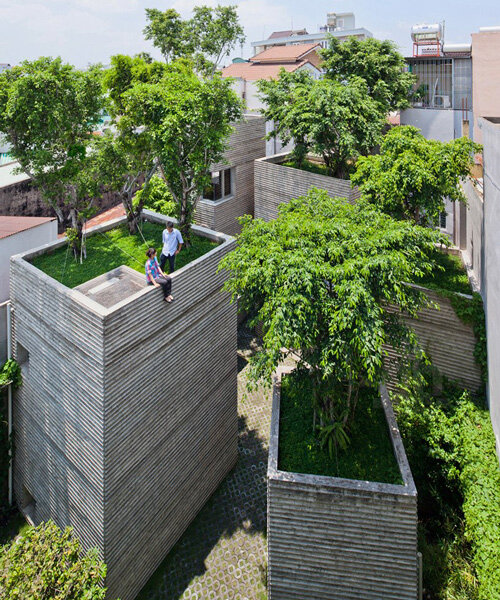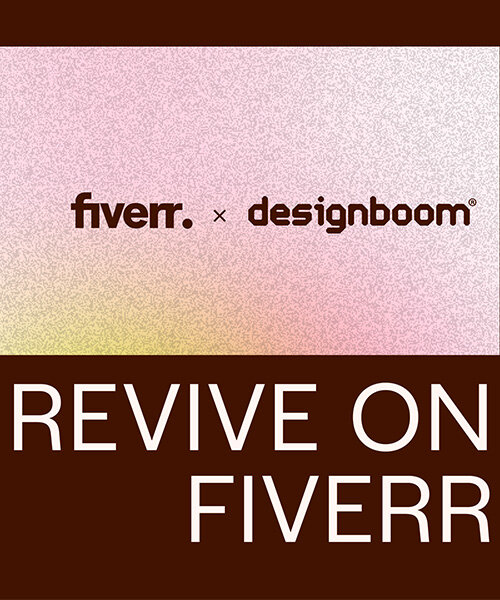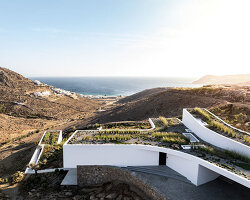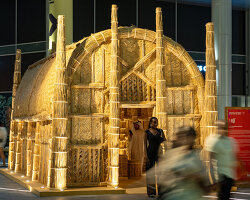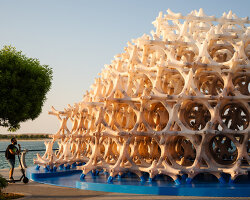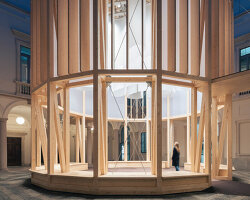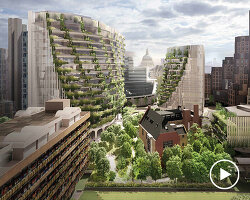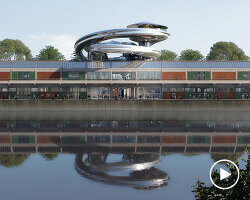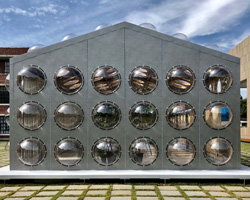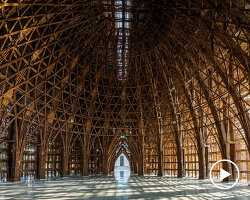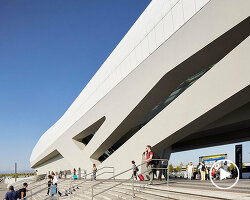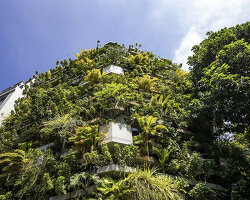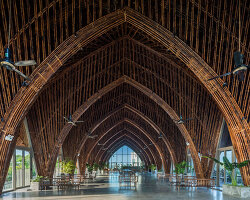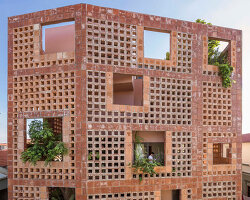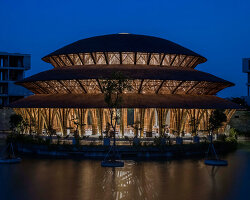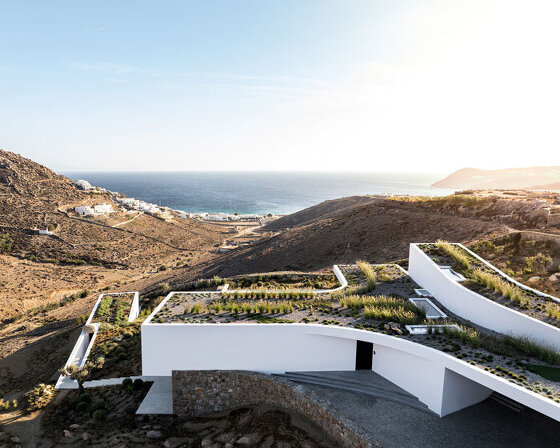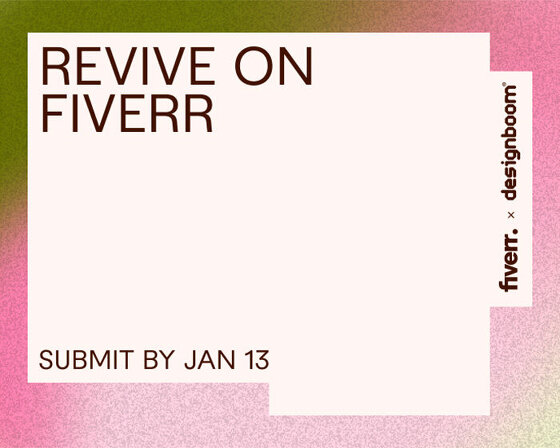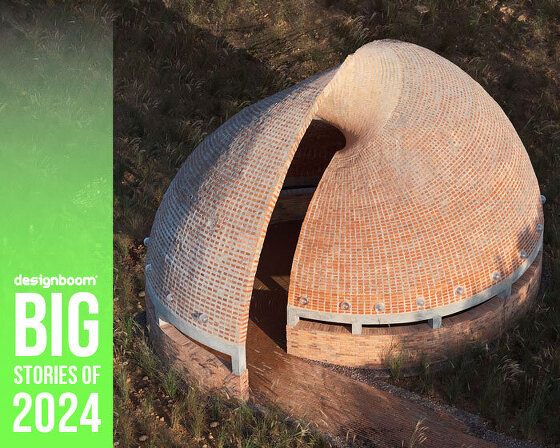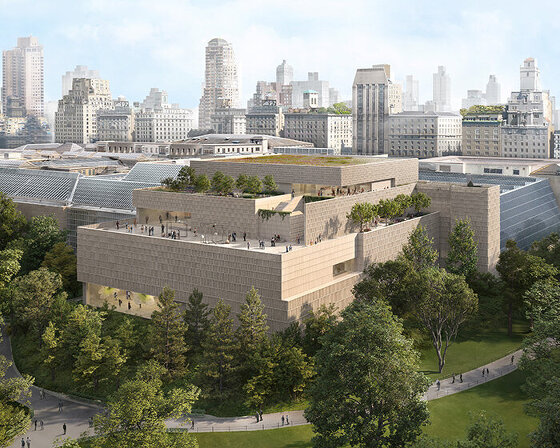until he was 15 years old, vo trong nghia lived in a small village in vietnam without electricity. it was here, without air conditioning, or even an electric fan, that he learned how to use the natural environment to deal with the country’s intense climatic conditions. ‘trees, water, ventilation, and sunlight became the most important issues in our lives,’ the architect tells designboom in this exclusive interview. after studying for a decade in japan, vo trong nghia founded his firm in vietnam, VTN architects, in 2006 and has since completed an incredibly diverse range of projects — from a bamboo restaurant that soars 16 meters into the air, to a house that appears to be made from giant concrete planters.
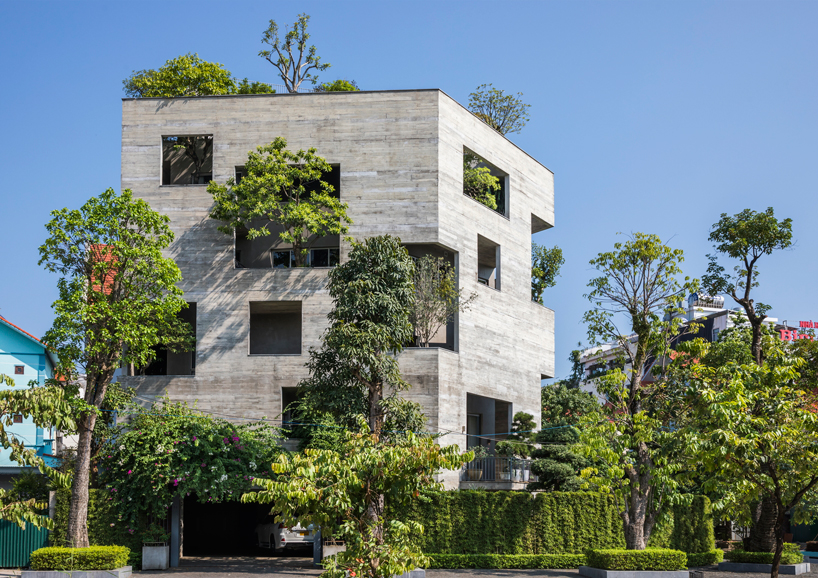
ha long villa | image by hiroyuki oki | read more about the project on designboom here
main image: nocenco cafe | image by trieu chien | read more about the project on designboom here
VTN architects’ extensive work with bamboo, thatched roofs, and perforated blocks is part of a larger vision to bring people closer to nature. the studio seeks to minimize the harmful effects of construction projects on human health and the environment, and tackle urgent environmental problems such as flooding, overheating, and air pollution. ‘this year I saw a really heavy snowstorm in the US, and last year we had super huge floods in my hometown,’ continues vo trong nghia. ‘all of my village and all of my district was underwater, which was crazy. everyone around the world now knows how serious climate change is.’
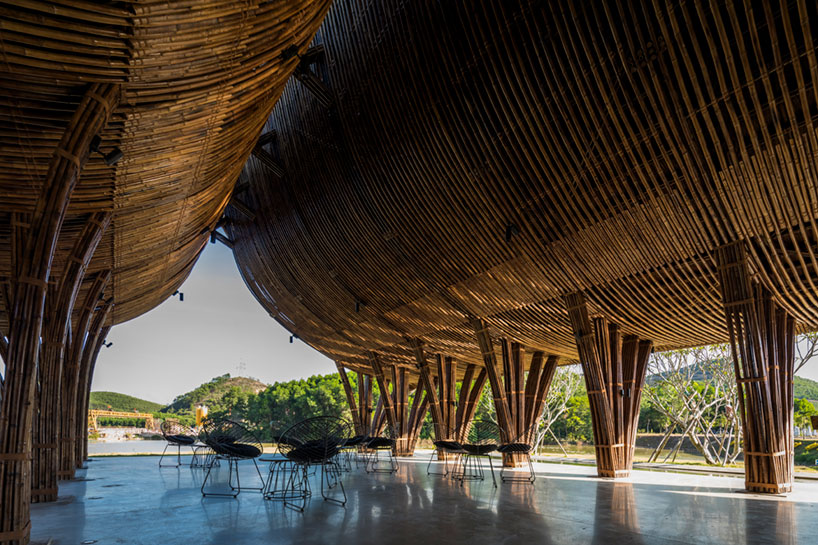
huong an vien visiting center | image by hiroyuki oki
read more about the project on designboom here
the vietnamese architect also discusses the important role that meditation plays in his life. vo trong nghia and his firm meditate for two hours each day, a practice that he says improves focus, reduces stress, and increases productivity. the architect also explains how the five precepts of buddhism, rules that prevent lying, stealing, and other vices, impact his work and society in general. ‘when we make architecture, we never use photoshop to submit the work because photoshop is one kind of lying,’ vo trong nghia explains. ‘if we create architecture without a license for revit or 3ds max, that is stealing.’ read the interview in full below, and explore more of VTN’s acclaimed work on designboom here.
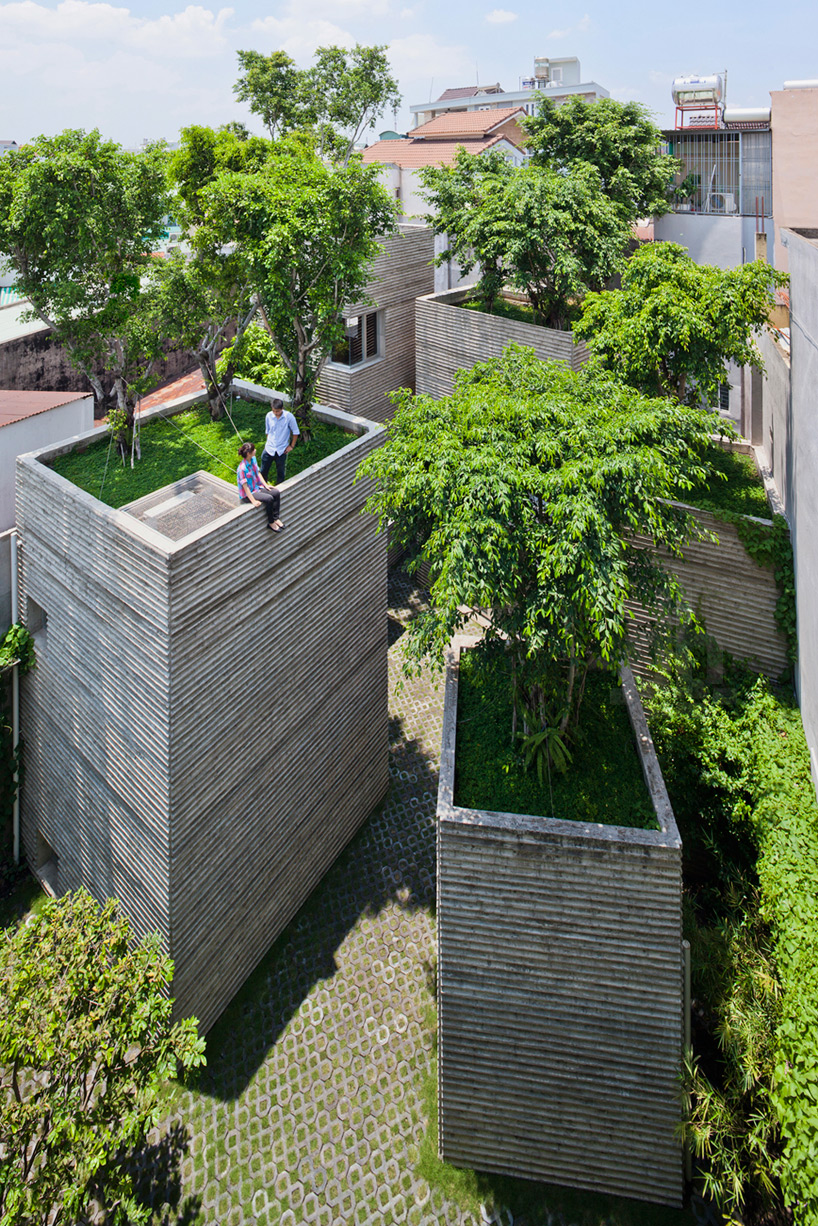
house for trees | image by hiroyuki oki
read more about the project on designboom here
designboom (DB): can you start by telling us why you originally wanted to be an architect?
vo trong nghia (VTN): I was living in a really small village in vietnam without electricity until I was 15. I didn’t have any information — no TV, and the radio was really simple and always broken. I didn’t have any books or newspapers and I just saw a man who was an architect. he didn’t look poor like me, he looked richer. I decided I would like to become an architect so I would not be poor. that is the first reason, and it’s true!
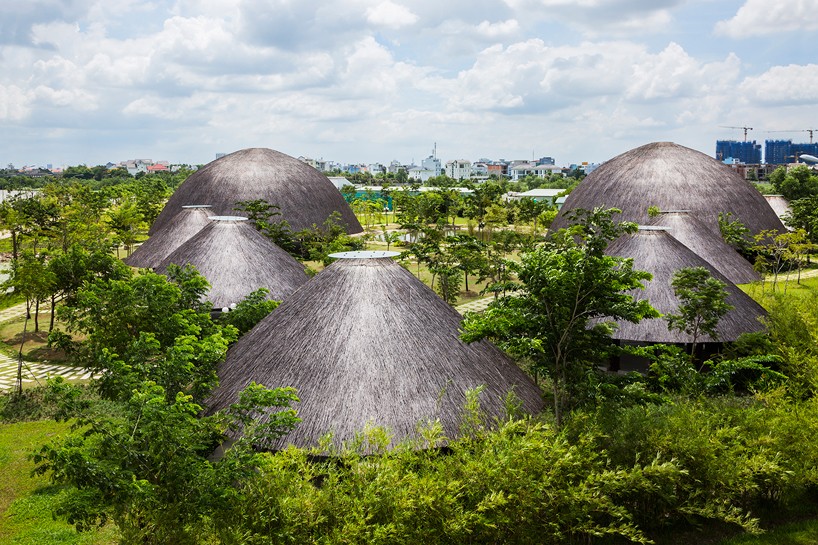
diamond island community hall | image by hiroyuki oki
read more about the project on designboom here
DB: did you develop your love of nature over time, or did you always have this love of nature?
VTN: I love nature. it’s really painful that we continue to destroy our planet to make cities, to make villas, to make buildings. that’s why our firm always tries to find a solution to protect our planet. when I was a child, I had to deal with hot weather without an air conditioner, and even without an electric fan — so trees, water, ventilation, and sunlight became the most important issues in our lives. to deal with hot weather, you need the shade of a really big tree, ventilation, and you need to position the pond so the wind goes across the pond and under the tree to your home. that became a really important element of our architecture. that’s why I love trees and why I love nature.
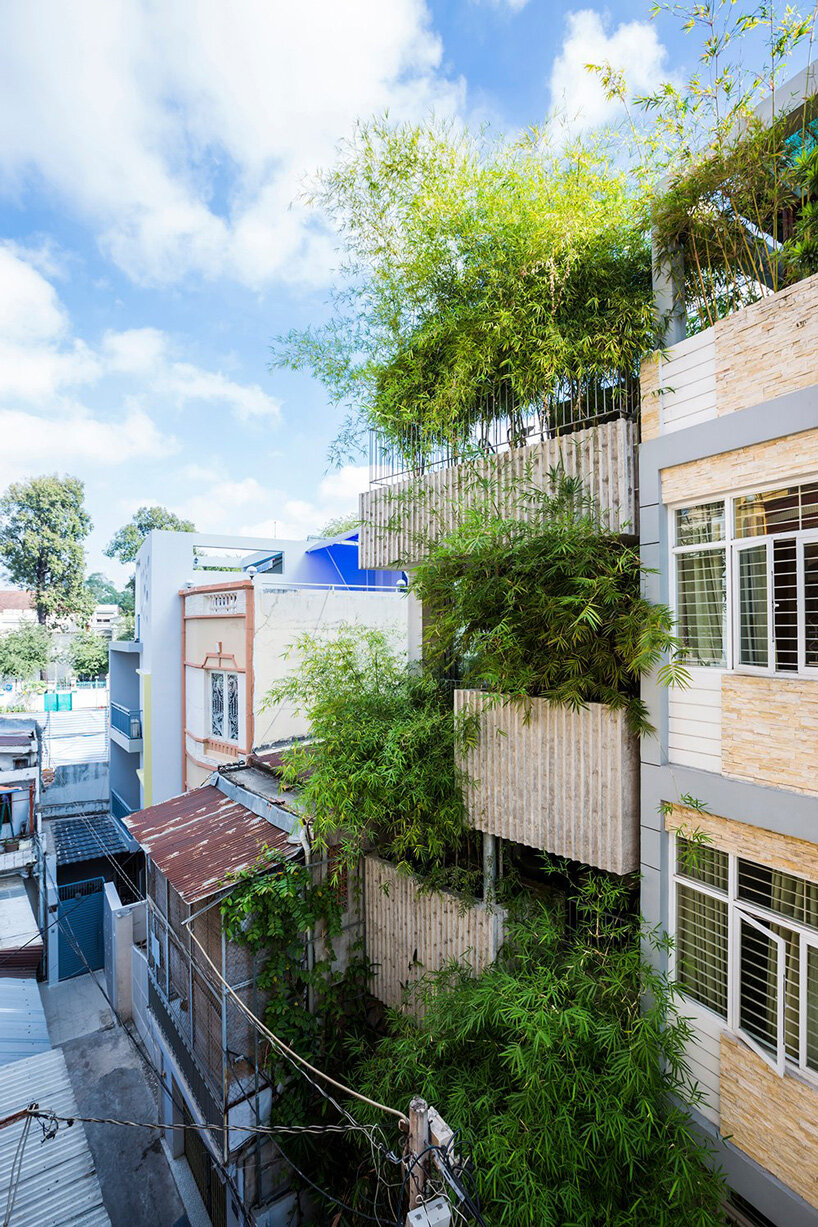
bamboo house | image by hiroyuki oki
read more about the project on designboom here
VTN (continued): later, once we knew about how humans are destroying our planet, we tried to develop a way to bring back greenery to the city using natural materials that don’t destroy our planet too much. this year I saw a really heavy snowstorm in the US, and last year we had super huge floods in my hometown. all of my village and all of my district was underwater, which was crazy. everyone around the world now knows how serious climate change is.
DB: do you think architects need to do more?
VTN: [US president] biden is trying very hard to protect the environment and I really appreciate what he is doing. some architecture is just for pictures, but in reality that’s really bad because it will be bad after a few years and we cannot use it anymore. as architects, we should try to protect our environment.
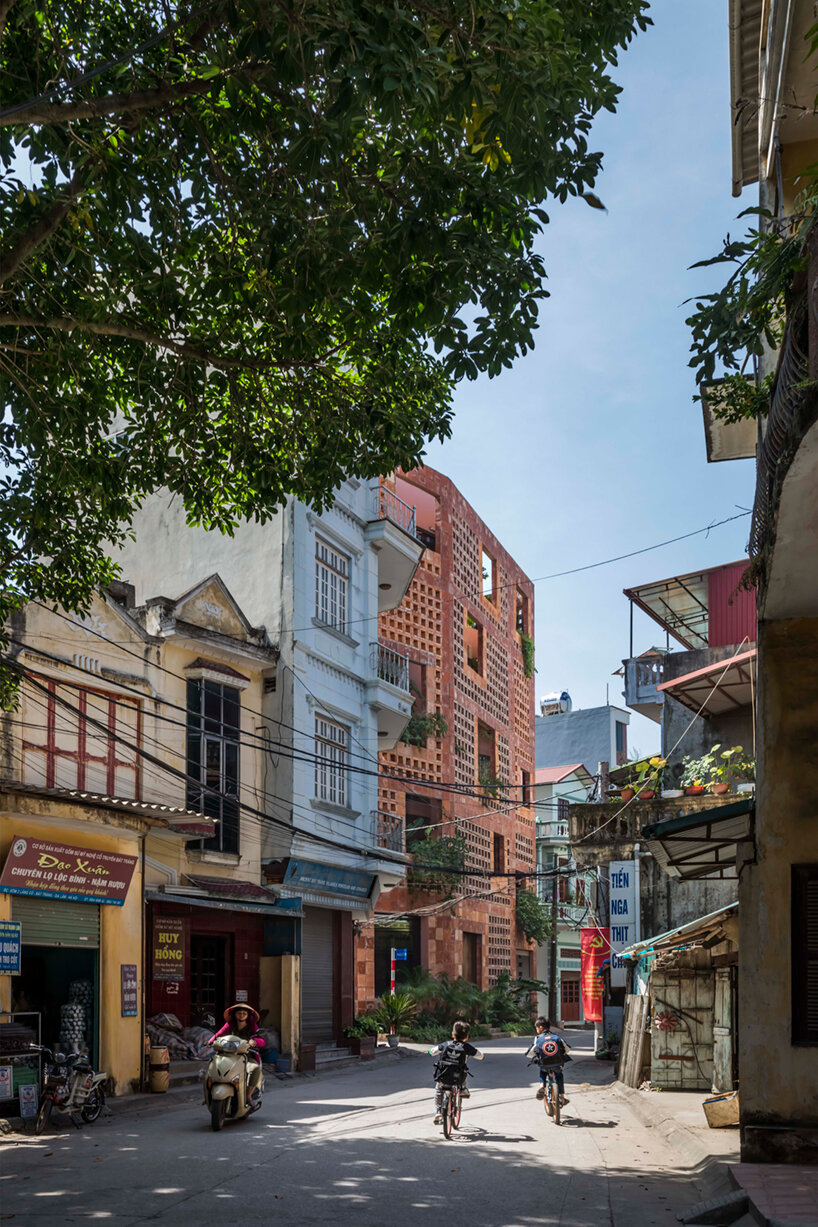
bat trang house | image by hiroyuki oki
read more about the project on designboom here
DB: when you work on your projects in vietnam, is it a challenge for you to bring nature to these urban environments?
VTN: no, because in ho chi minh city or hanoi, it is quite polluted and there is a lack of greenery. people really had enough of that, and greenery became really essential. if, in the hot weather, you are always in the air conditioner, you feel bad too. we have a lot of sunlight, a lot of rain, a lot of wind, and we just invite parts of them into our homes. then the clients accept that, its not really difficult. at the beginning it was difficult, but recently they have understood that very well.
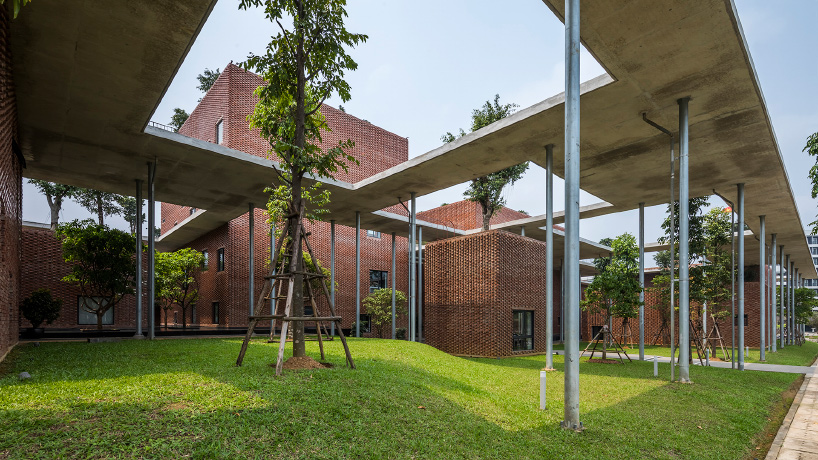
viettel academy educational centre | image by hiroyuki oki
read more about the project on designboom here
DB: can you tell us about your relationship with meditation? does it change the way you make architecture?
VTN: we are maintaining the five precepts, which were taught by buddha: no lying, no stealing, no killing, no sexual misconduct, and no alcohol or tobacco or drugs — no vices. we run our company based on that and we meditate for two hours per day — one hour in the morning and one hour in the afternoon. our whole way of working and making architecture is based on those methods. that makes us really calm, really focused, less anxious, and really in harmony with each other. that’s why we are very productive. this means that you respect the life of a mosquito as well as all other beings. that’s why we respect our planet, human beings, and other animals. and of course, we try to protect our environment, our nature, our planet, in our way, but it is not really enough.
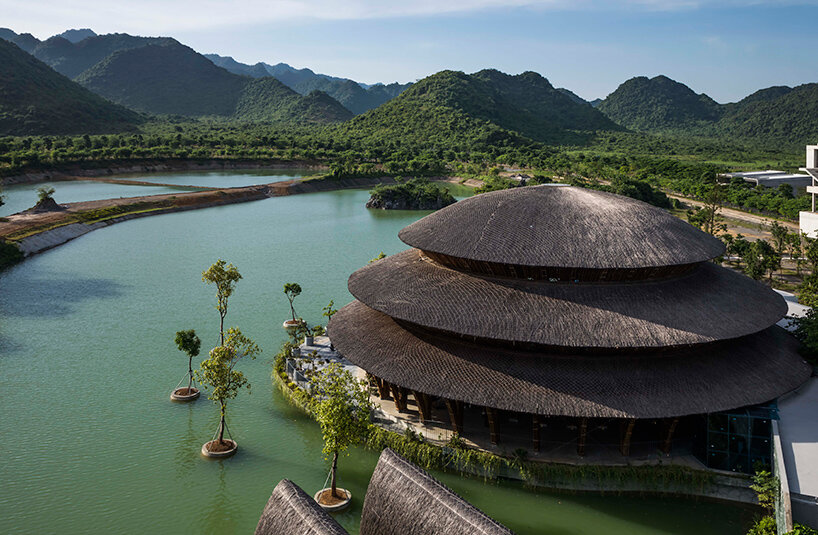
vedana restaurant | image by hiroyuki oki
read more about the project on designboom here
VTN (continued): it is not just about how to make beautiful architecture, but how we protect our planet, our mental health, our society, and our environment. as an architect, and as a human being, the one who maintains the five precepts is the one you can believe because they never lie, they never kill, they never steal, they never have sexual misconduct, or even alcohol or tobacco. that is best for our society, not only architecture. I’m trying to build up a system with the five precepts and meditation that means that you are the most believable person in the world, because you never lie.
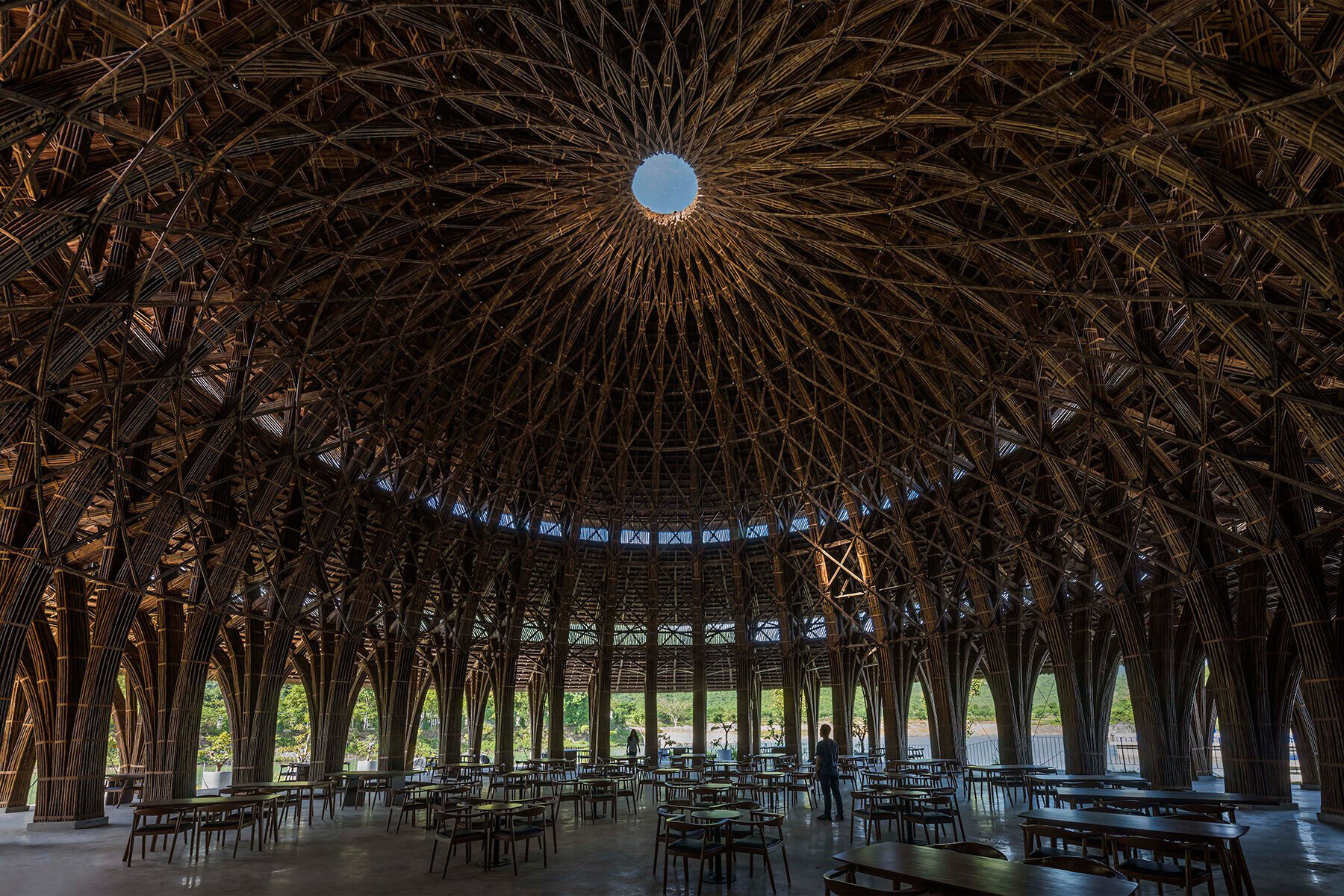
vedana restaurant | image by hiroyuki oki
DB: and this can be applied to your work?
VTN: when we make architecture, we never use photoshop to submit the work because photoshop is one kind of lying. and, if we create architecture without a license for revit or 3ds max, that is stealing. you should be careful because people lie to make up the story, or to make the story more beautiful.
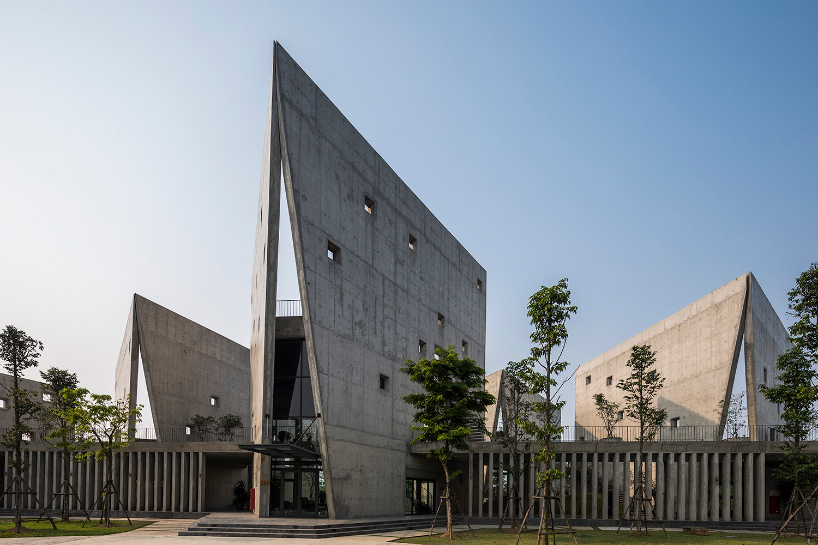
viettel offsite studio | image by hiroyuki oki
read more about the project on designboom here
VTN (continued): in our office, we don’t have much stress and we don’t have conflict between staff. that’s why our staff are really productive. our office is like a forest in the city. we are trying very hard to recycle water, to use solar panels, and use the greenery to even cultivate the palms on our building. meditation makes us really focused, and every detail comes out easier. so it’s not just about architecture — it’s more than architecture. but, of course, as a result, we can do architecture better.
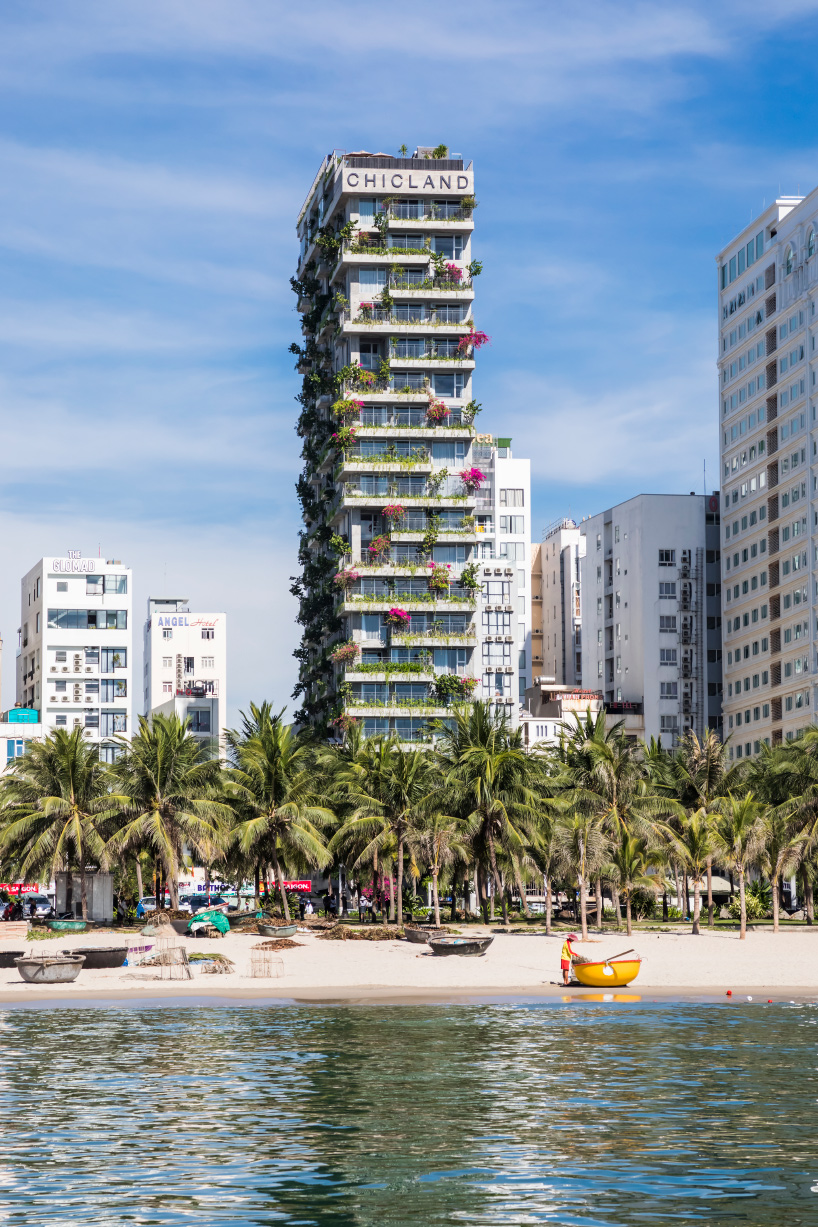
chicland hotel | image courtesy of VTN architects
read more about the project on designboom here
DB: how has your work with bamboo developed over the last 15 years?
VTN: I can proudly say that all of our bamboo projects are in really good condition, not good but super good! that is sustainable. nowadays with the media you need to be careful because they talk about ‘sustainable’ just for the story, but in reality after a few years, they disappear. later, we developed more structural systems, how to make bamboo more durable, how to harmonize them with nature, and how to build with close to zero energy. I’m trying to do a 2, 3, 4-floor building at the moment and there is a lot of interesting developments recently.
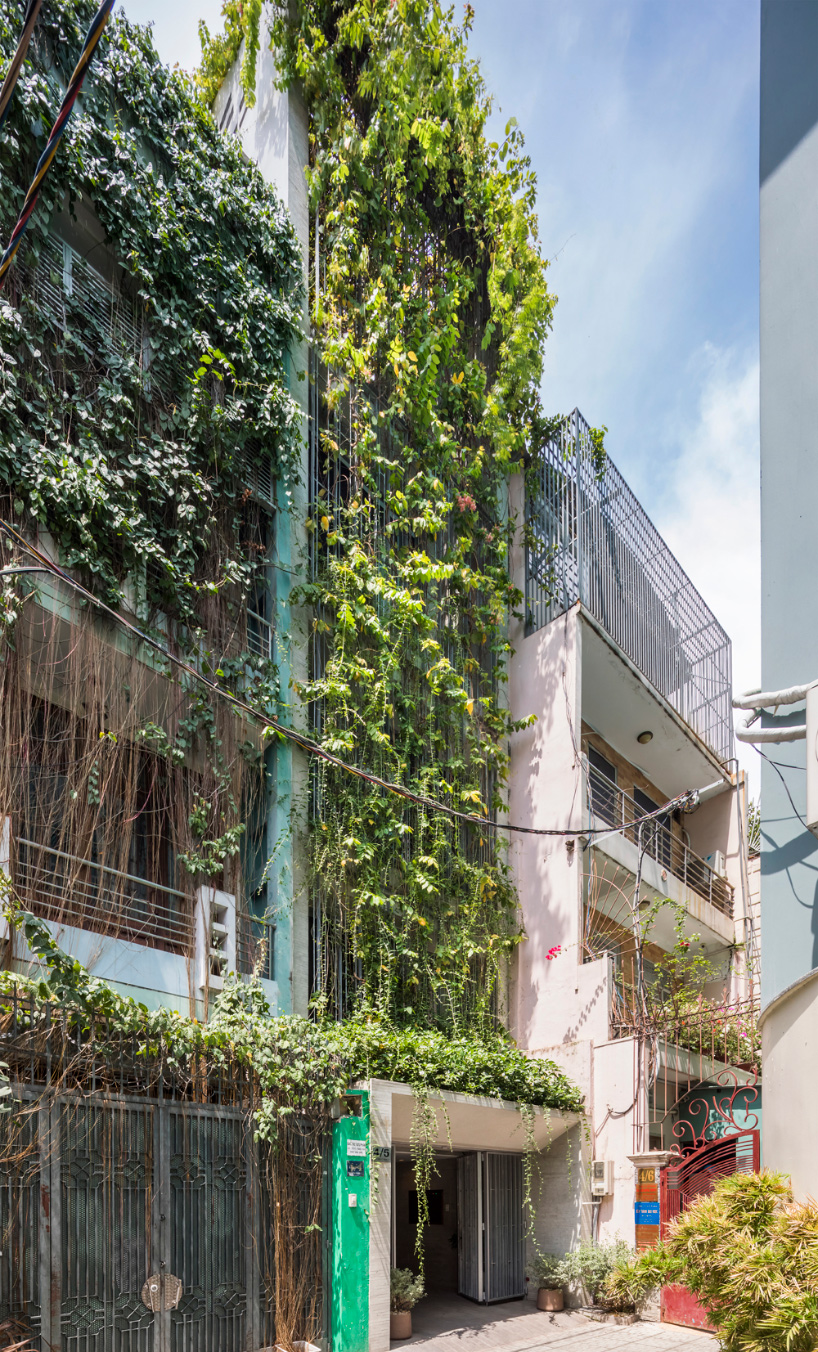
breathing house | image by hiroyuki oki
read more about the project on designboom here
DB: is it the same with the greenery in your buildings?
VTN: at the beginning I just loved to live in the forest. that’s why I tried to introduce greenery to buildings. but it should also work to conserve energy for lighting and for air conditioning, so we try to use solar panels, recycle water, and use not just greenery, but farming.
the most important thing that people maybe forget nowadays is space quality. they try to make a beautiful shape, but the space quality and the detailing is nothing. it has become really weird nowadays with architecture trends, even the way they choose their words. space quality should be the first priority. buildings should be right in terms of protecting our environment and planet, then the space quality should be nice! people nowadays have almost forgot about space quality.
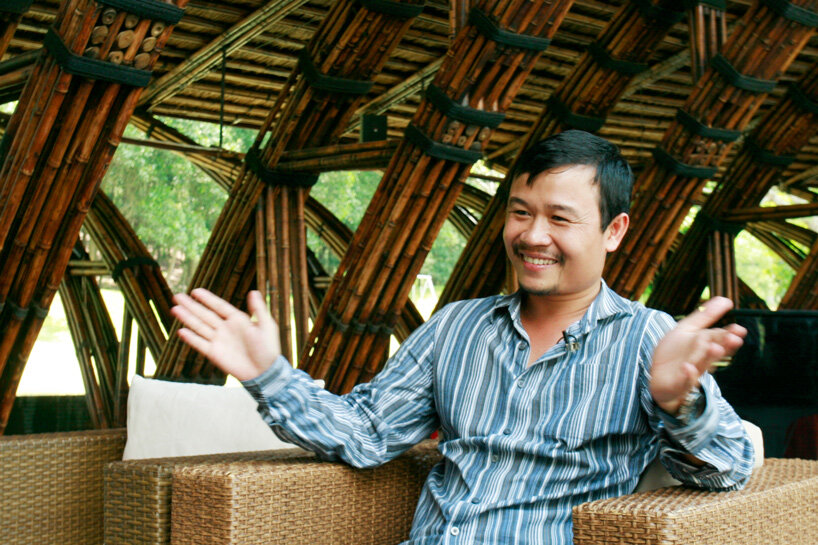
vo trong nghia founded VTN architects in 2006
